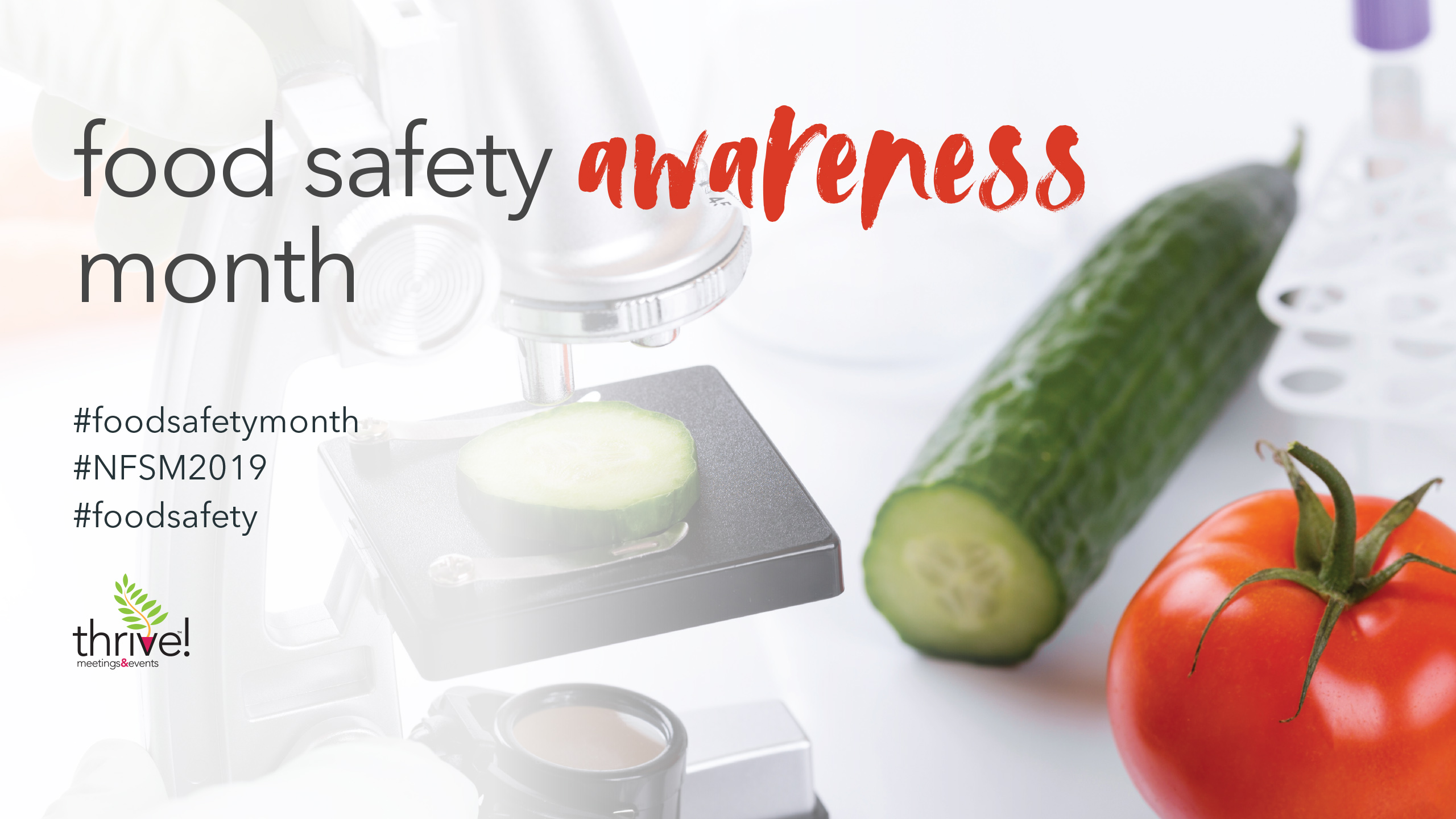Understanding Food Safety is Crucial for Controlling Risk
Thinking of everything that can go wrong with an event is nearly impossible, but that is what meeting professionals try to do when we create contingency plans as a means to controlling risk associated with our events.
Think about the Farmers Insurance “Hall of Claims” commercials showcasing things that have gone wrong — cement pouring into a car, hot air ballon landing on a parked car. It’s a clever campaign that highlights unique claims their customers have submitted. At the end of each commercial, the “voice of God” affirms their tagline: “We know a thing or two, because we’ve seen a thing or two.” The purpose of insurance is to reduce your business’ exposure to the effects of particular risks.
As an event professional could you create similar videos sharing your first-hand experience in all sorts of situations — both positive and negative — from producing events for your clients? I know I could! The stories we can tell, including the Farmer’s Insurance claims really happened. Would you have ever thought of it?
Because of what we have seen and done, we now excel at — fortunately, or unfortunately — in dealing with crises and controlling risk. Whether planning a corporate sales conference, trade show, staff retreat, gala fundraiser, or company picnic, event professionals MUST think of all potential risks to make sure everything is executed as planned without:
- Harm to our stakeholders
- Damage to the organization’s reputation, and/or
- Financial burdens from unpredicted circumstances.
Risk for #eventprofs comes in many forms these days, but for the month of September, in honor of National Food Safety Month (#NFSM19), we at thrive! are focusing on the risk associated with food and beverage and how we can control it.
Food safety is no longer just an issue for food manufacturers, producers, suppliers. Caterers, food service providers, restaurants, and even event professionals and hosting organizations need to understand how to mitigate the risks associated with serving food and beverage. Case in point, are these two incidences:
National Food Safety Conference Stricken by—You Guessed It—Food Poisoning
Norovirus Caused Outbreak Among NAACP Conference Attendees in California
The CDC estimates that 48 million Americans (1 in 6) get sick, 128,000 are taken to hospital, and 3,000 people die from consuming contaminated food each year. Fifty percent of them contracted their illness in commercial and retail establishments. Just this week, the coroner ruled that Owen Carey died from buttermilk ingestion while celebrating his 18th birthday despite informing staff of his milk allergy.
These stories illustrate how not everyone is following the correct procedures. For that reason, event professionals need to have their own food safety management system in place to help keep attendees, employees, and all other stakeholders safe. What policies and procedures do have in place to prevent incidences like Owen’s from happening at your event?
The National Restaurant Association points out that the FDA’s Risk Factor Study testifies to the fact that a “well-developed food safety management system is the strongest predictor of having lower occurrences of food safety issues.”
Last year, I shared a Food Safety Checklist on my blog to help you initiate the conversation with each of your foodservice providers and evaluate their ability to care for your event attendees. This month, I will be updating the list and sharing concepts and resources for you to develop your own food safety management system, mitigate risks associated with food and beverage, and offer a safe and delicious experience for all stakeholders. Be sure to check out our Facebook page to find them.
Is there anything you want to know about food safety?
Have a story you can share with me about a good and/or bad experience related to food safety? Send it to tracy@thrivemeetings.com.
Eat well and safely!



